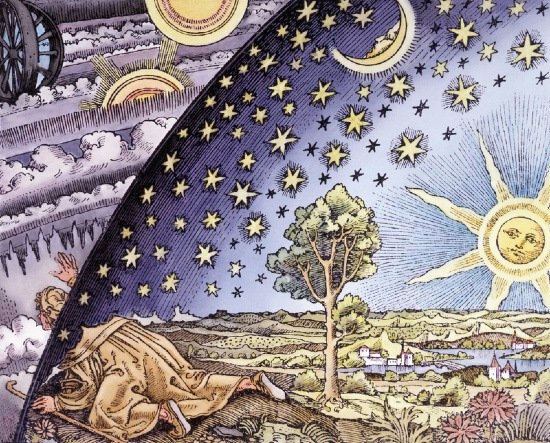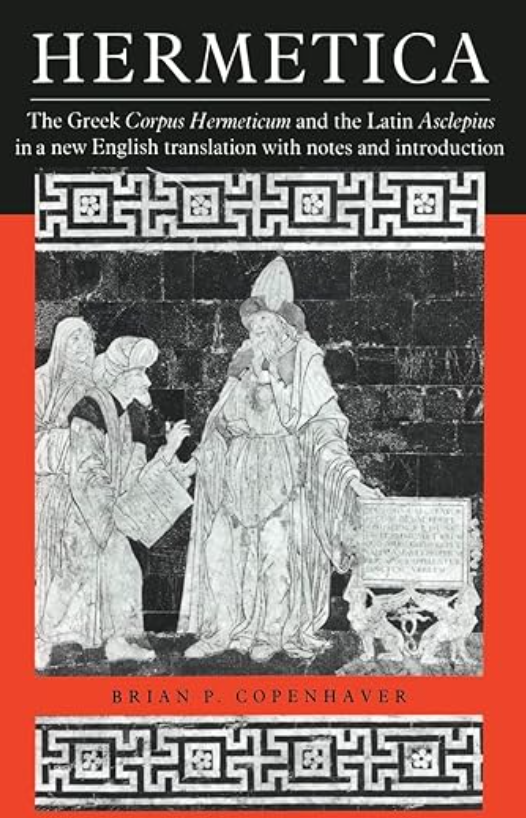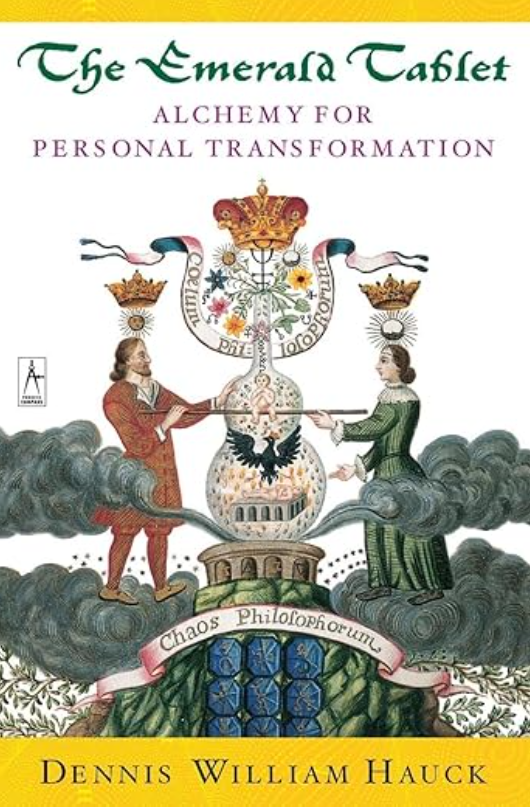
Hermeticism FAQs
Hermeticism vs Law of Attraction?
Surface Manifestation or Universal Mastery?
Many people are first introduced to metaphysical ideas through the Law of Attraction—the belief that your thoughts shape your reality. But where do these ideas come from? And how do they compare to the deeper, more ancient system of Hermeticism?
This page explores the connection—and the crucial distinctions—between these two approaches to reality creation. One is a modern mindset trend; the other is a complete spiritual science rooted in ancient wisdom.
-
An ancient spiritual philosophy from Egypt and Greece
Based on texts like the Corpus Hermeticum and The Kybalion
Teaches that the universe is mental and governed by 7 universal laws
Emphasizes self-mastery, symbolic understanding, and alignment with cosmic law
-
A modern spiritual belief popularized by The Secret
Teaches that thoughts and emotions attract experiences
Focuses on positive thinking, visualization, and emotional frequency to manifest desires
Emphasizes personal empowerment and mindset as tools for change
Historical Context of Hermeticism and Tibetan Buddhism
The Law of Attraction, as it's known today, rose to popularity in the 2000s with The Secret, but its roots go back to New Thought movements in the late 19th century. Thinkers like Phineas Quimby, Napoleon Hill, and Neville Goddard drew from Theosophy, Christian mysticism, and Hermeticism—especially The Kybalion’s Principle of Mentalism.
Hermeticism, on the other hand, is far older. Emerging in ancient Alexandria, it provided the foundation for alchemy, astrology, and Western mystery schools, teaching not just how to manifest—but how to align with divine order. While the Law of Attraction simplifies and popularizes the “mind shapes reality” concept, Hermeticism teaches how to live it, masterfully and consciously.
If you've worked with the Law of Attraction and felt like something was missing—you’re not alone. Hermeticism offers the depth, discipline, and spiritual context that turns casual manifestation into conscious co-creation.
The Law of Attraction is a door. Hermeticism is the house. By exploring the full spectrum of Hermetic principles, you gain access to a much richer understanding of the mind, the universe, and your true nature as a creator.
Key Differences of Hermeticism vs. The Law of Attraction
Origins and Lineage
Hermeticism dates back to antiquity and has influenced alchemy, magic, Kabbalah, and Western esotericism.
Law of Attraction is a modern reinterpretation, drawn loosely from New Thought, Theosophy, and watered-down Hermetic principles.
Depth of Teaching
Hermeticism is a complete metaphysical system—including cosmology, psychology, ritual, and energetic transformation.
Law of Attraction is a simplified subset—focusing mainly on the Principle of Mentalism, often leaving out the deeper laws like Polarity, Rhythm, and Cause & Effect.
Cause and Effect vs. Just Think Positive
Hermeticism acknowledges the complexity of karma, timing, and universal law. Manifestation requires inner alignment and working with all principles—not just thinking happy thoughts.
Law of Attraction can oversimplify: “What you think, you get,” often ignoring shadow work, emotional complexity, or deeper purpose.
Purpose of Manifestation
Hermeticism teaches manifestation as part of the soul’s evolution toward divine consciousness.
Law of Attraction often centers on personal gain—manifesting love, money, or success—without a greater spiritual context.
Self as Creator vs. Ego as Magnet
Hermeticism sees the self as a divine being participating in the mind of the All, with responsibility and reverence.
Law of Attraction can reinforce ego-centric thinking, with less emphasis on integration, shadow work, or ethics.
The Key Similarities of Hermeticism vs. Tibetan Buddhism
Reality is Mental
Both agree that reality is shaped by mind and intention—what you focus on expands.
Visualization, Affirmation, and Intention
Visualization, affirmations, and energy awareness are key tools in both traditions—when used skillfully.
Personal Responsibility
Both emphasize that you are the cause—and that transformation begins within.
Emotional Frequency Matters
Why Study Both?
If you've worked with the Law of Attraction, you’ve already taken a powerful first step: realizing that your thoughts shape your reality. But that’s just the beginning.
Studying both Hermeticism and the Law of Attraction allows you to move from surface-level manifesting to deeper spiritual mastery. The Law of Attraction can spark awakening—it gets you thinking about energy, vibration, and intention. Hermeticism shows you how to refine those energies, align with cosmic law, and evolve the self in service to something greater.
By honoring both paths, you gain:
A broader toolkit for transformation—mental, emotional, and energetic
A deeper understanding of the laws behind manifestation (beyond just “ask, believe, receive”)
A more ethical, purposeful, and empowered approach to creation
These traditions don’t need to compete—they can complement one another beautifully. Studying both builds discernment. It turns fleeting inspiration into lifelong practice. And it anchors manifestation in the deeper quest to Know Thyself.
🔍 Explore More Esoteric Comparisons
Curious how Hermetic thought compares to other spiritual traditions? Continue your journey of discovery:
What Is Hermeticism? (Beginner’s Guide) →
Hermeticism vs Christian Mysticism →
Hermeticism vs Law of Attraction →
Note: Spiritual exploration of various thought systems isn’t to decide which one is “better” or more correct—it’s to expand your lens. Each tradition offers a unique language for describing the journey of the soul, the structure of the universe, and the human potential for awakening.
In true Hermetic fashion, learning from multiple wisdom traditions is a path to greater discernment, wholeness, and integration. Let these teachings be mirrors, not rules—tools that help you clarify your own experience of the divine.
Recommended Texts for Students of Hermeticism
-

Corpus Hermeticum
A collection of dialogues between Hermes and his disciples, covering topics such as the nature of the divine, the creation of the universe, and the path to spiritual enlightenment. It explores the relationship between the divine mind and human consciousness, offering a path toward spiritual awakening.
-

Emerald Tablet
A cryptic and poetic text that contains some of the most famous Hermetic aphorisms, including "As above, so below." This phrase encapsulates the Hermetic belief in the interconnectedness of all things and the idea that the microcosm (human experience) reflects the macrocosm (the universe).
-

The Kybalion
This text presents the foundational teachings of Hermetic philosophy. It outlines the 7 universal principles that govern the nature of reality, providing insight into the workings of the universe with practical guidance for spiritual growth, self-mastery, and understanding the deeper truths of existence.
Study with an Authentic Hermetic Lineage…
The tools, healings and secrets of the ancient mystery school traditions were once veiled, known only to the privileged elite—royalty, artists, scholars.
In these remarkable times, the doors are now open to the public, with wisdom unveiled for all who seek to take the journey on the path of self-mastery that has illuminated the minds of history's brightest souls…
Leonardo DiVinci, Nicola Tesla, David Bowie… These are just some of the remarkable people who studied in the mystery school tradition.
Are you ready?

